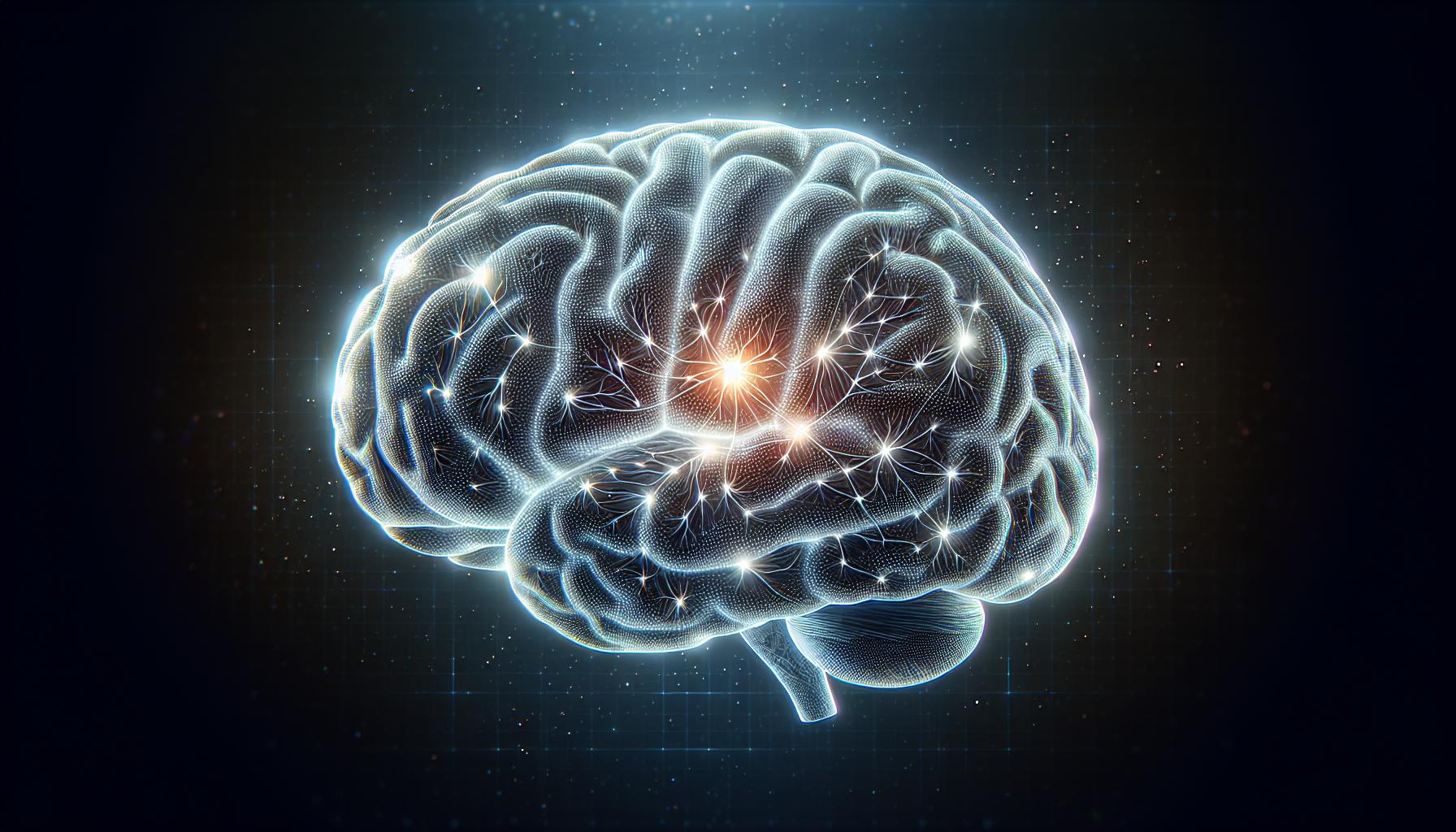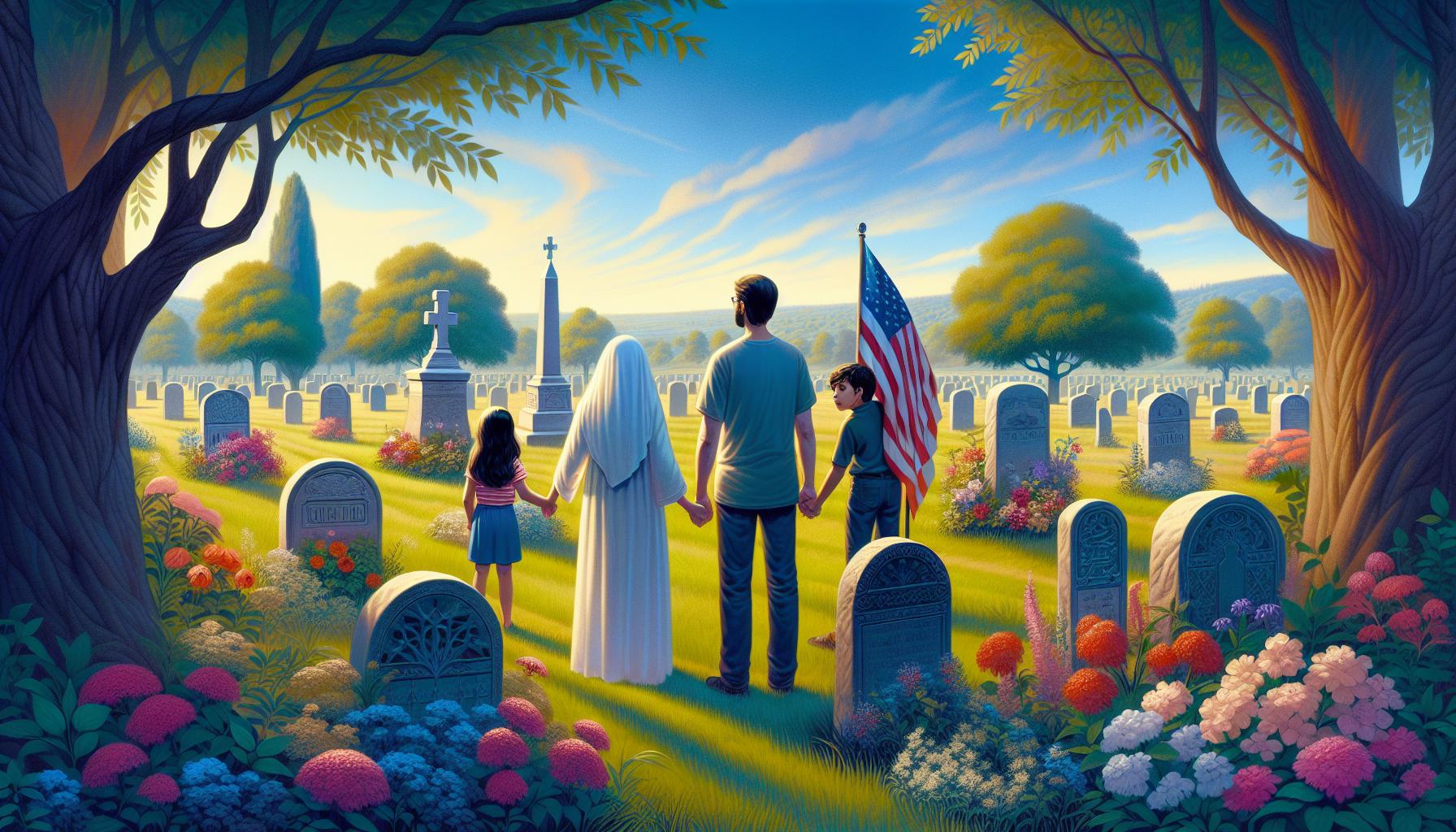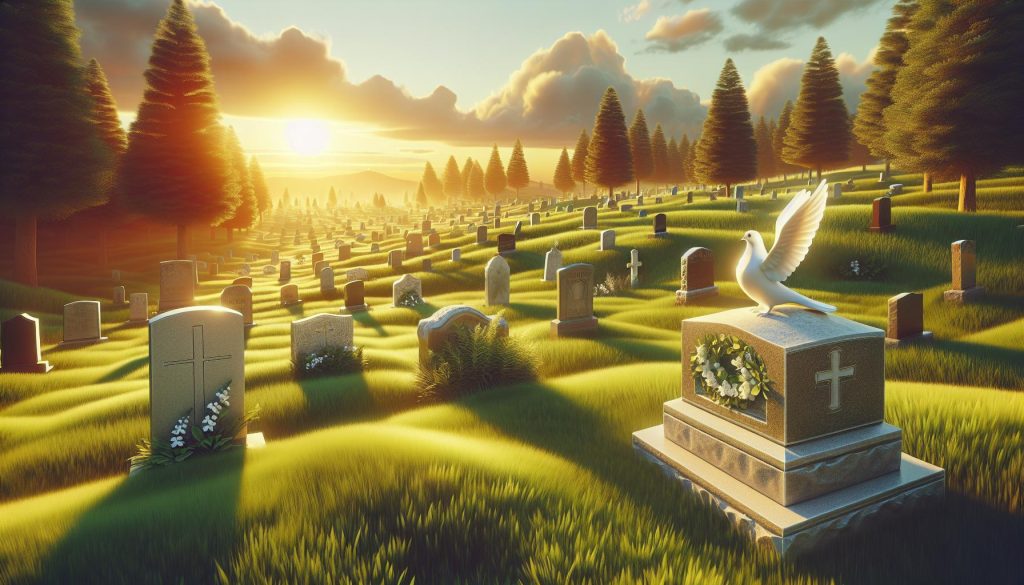Death is an inevitable part of life that everyone must face, yet what happens after we take our final breath remains one of the greatest mysteries. Throughout history, people have pondered this profound question, leading to diverse beliefs and theories across cultures and religions.
Some believe in an afterlife where the soul continues on, either in a heavenly paradise, a fiery underworld, or a spiritual realm. Others think that death marks the end of existence, with no consciousness remaining after the body ceases to function.
As science progresses, researchers continue to explore the biological and neurological processes that occur during and after death. While we may never have a definitive answer, examining the various perspectives on this timeless question can provide insight into the human condition and our search for meaning in the face of mortality.
Physical Changes After Death
When a person dies, their body goes through a series of predictable physical changes. These changes are divided into immediate, early, and late postmortem stages.
Pallor Mortis
Pallor mortis, or paleness of death, is one of the earliest signs of death. It occurs 15-25 minutes after death due to lack of blood circulation and is caused by gravity pulling blood to the dependent portions of the body. Pallor mortis is more difficult to appreciate in individuals with darker skin tones[1][3][5].
Algor Mortis
Algor mortis is the cooling of the body following death. After death, the body no longer generates heat and will cool to match the ambient temperature around it. The rate of cooling is about 1.5°F (0.83°C) per hour until the body reaches ambient temperature[1][2][4]. Factors that can affect the rate of cooling include body fat percentage, clothing, and environmental conditions.
Rigor Mortis
Rigor mortis refers to the stiffening of the body after death due to chemical changes in the muscles. It begins 2-4 hours after death, starting with the eyelids, neck, and jaw. It then spreads to the trunk and limbs, before dissipating in the same order[1][3][5]. Rigor mortis is affected by the ambient temperature, with heat speeding up the process and cold slowing it down.
Livor Mortis
Livor mortis, also known as hypostasis, is the pooling of blood in the dependent portions of the body due to gravity. It begins 20-30 minutes after death, with maximum discoloration occurring 2-4 hours after death[2][4]. Livor mortis can help determine the position of the body at the time of death and is useful in estimating the postmortem interval.
Decomposition
Decomposition is the breakdown of tissues after death. It is divided into several stages, including autolysis (self-digestion of tissues), putrefaction (anaerobic bacterial growth), and skeletonization[3][5]. The rate of decomposition varies based on factors such as temperature, humidity, and accessibility to insects. In general, a body can take several months to several years to fully decompose, depending on the environment.
Spiritual and Religious Perspectives
Beliefs about what happens after death vary widely across different religions and spiritual traditions. Let’s explore some of the major world religions and their perspectives on the afterlife.
Christianity
In Christianity, death is seen as a transition from earthly life to eternal life. The soul is judged immediately after death or at the Last Judgment and sent to either heaven or hell based on the person’s actions and faith during their lifetime[2][4]. The concept of resurrection is central, where believers are resurrected to eternal life, just as Jesus Christ was raised from the dead, providing comfort and hope to Christians facing death[2][4]. Roman Catholicism also includes the doctrine of purgatory, an intermediate state where certain souls can atone for their sins before entering heaven[1].
Islam
Muslims believe in the afterlife, where the soul is judged by Allah based on their deeds and faith during their earthly life. The righteous enter paradise (Jannah), while the wicked are condemned to hell (Jahannam)[5]. The Day of Judgment (Yawm al-Qiyamah) is when the dead are resurrected, and their actions are weighed on a scale[6]. The Quran describes paradise as a beautiful garden with rivers, luxurious dwellings, and eternal peace[5].
Hinduism
In Hinduism, the soul (atman) is eternal and goes through a cycle of birth, death, and rebirth (samsara) until it achieves moksha, or liberation from the cycle[7]. Karma, the sum of a person’s actions in this and previous states of existence, determines their next incarnation[8]. Hindus believe in various realms, including Swarga (heaven) and Naraka (hell), where the soul may temporarily reside before being reborn[7].
Buddhism
Buddhists believe in reincarnation, where the soul is reborn into different realms based on their karma from previous lives. The ultimate goal is to achieve Nirvana, a state of enlightenment that releases the soul from the cycle of rebirth[9]. Buddhists do not believe in a permanent heaven or hell but rather in temporary realms where the soul may experience the results of its actions before being reborn[10].
Judaism
In Judaism, beliefs about the afterlife vary, but most agree that the soul continues to exist after death. Some believe in the World to Come (Olam Ha-Ba), a spiritual realm where the righteous are rewarded, while others believe in the resurrection of the dead during the Messianic Age[11]. Judaism focuses more on living a righteous life in the present than on the specifics of the afterlife[12].
Scientific Explanations

While spiritual and religious perspectives offer insights into the afterlife, science seeks to understand the physical and neurological processes surrounding death. Recent studies have explored brain activity after death, near-death experiences, and theories on consciousness.
Brain Activity After Death
Even after the heart stops beating, the brain may continue to function for a short period. A 2017 study found that certain genes in the brain remained active for up to 4 days after death in mice[1]. This post-mortem gene expression could explain reports of near-death experiences and shed light on the dying process.
Near-Death Experiences
Near-death experiences (NDEs) are reported by people who have been clinically dead but later revived. Common elements of NDEs include:
- Out-of-body experiences
- Feelings of peace and calmness
- Encountering deceased loved ones or spiritual beings
- Seeing a bright light or tunnel[2]
While some attribute NDEs to spiritual causes, scientists suggest they may result from oxygen deprivation, brain chemical changes, or psychological coping mechanisms[3].
Theories on Consciousness
The nature of consciousness and its relationship to the brain remains a mystery. Some theories propose that consciousness:
- Arises from complex neural networks in the brain
- Exists independently of the physical body
- Is a fundamental property of the universe[4]
Research into quantum physics and the role of microtubules in brain cells offers potential explanations for how consciousness could persist after death[5]. However, much remains unknown about the nature of consciousness and its fate when we die.
Cultural Beliefs and Practices

Cultural beliefs and practices surrounding death vary greatly across different regions and traditions. Let’s explore some fascinating examples from ancient and modern cultures.
Ancient Egyptian Afterlife
The ancient Egyptians had an elaborate belief system centered on the afterlife. They believed that the deceased would undergo a judgment by Osiris, the god of the underworld, where their heart would be weighed against the feather of truth[2][5]. If deemed worthy, the person would be granted eternal life in the afterlife.
To ensure the body was prepared for this journey, the Egyptians practiced mummification. This intricate process involved removing internal organs, treating the body with natron (a natural salt), and wrapping it in linen bandages[2][5]. The preserved body, or mummy, would serve as a vessel for the person’s Ka (spirit) to return to in the afterlife.
Mesoamerican Views on Death
In Mesoamerican cultures, such as the Aztec and Maya, death was seen as a natural part of the life cycle. The Aztecs believed in a complex afterlife system, where the manner of death determined the soul’s destination. Warriors who died in battle and women who died in childbirth were thought to ascend to a paradise associated with the sun[1].
The Maya had a similar belief in multiple realms of the afterlife. They performed elaborate burial rituals, often placing offerings and personal belongings with the deceased to aid them in the next life[1]. The Mayan underworld, Xibalba, was a challenging realm that the soul had to navigate before reaching its final resting place.
East Asian Ancestor Worship
In many East Asian cultures, particularly in China, Japan, and Korea, ancestor worship plays a significant role in death rituals and beliefs. Filial piety, or the reverence for one’s ancestors, is a core value in these societies[3][4].
Ancestors are believed to continue to influence the lives of their descendants from the spirit world. Families perform regular rituals and offerings to honor and appease their ancestors, seeking their guidance and protection[3]. These practices include presenting food, burning incense, and maintaining ancestral altars or shrines in the home.
The Hungry Ghost Festival, observed in Chinese communities, is a time when the spirits of the deceased are believed to visit the living[4]. Special offerings and ceremonies are conducted to provide for the needs of the ghosts and to ensure their contentment in the afterlife.
These diverse cultural beliefs and practices surrounding death reflect the human desire to find meaning and connection in the face of mortality. By honoring the deceased and maintaining a relationship with the afterlife, these traditions provide comfort, guidance, and a sense of continuity for the living.
Coping with Death and Grief

Dealing with the loss of a loved one is one of life’s most challenging experiences. Understanding the stages of grief and the role of mourning rituals can help individuals navigate this difficult journey.
Stages of Grief
The five stages of grief, as defined by Elisabeth Kübler-Ross, provide a framework for understanding the emotional process following a loss[1][2]:
- Denial: The initial stage, where individuals may feel shocked or numb, struggling to accept the reality of the loss.
- Anger: As the reality sets in, people may experience frustration, resentment, or anger towards the deceased, themselves, or a higher power.
- Bargaining: In this stage, individuals may engage in “what if” or “if only” thinking, attempting to negotiate a way out of the pain.
- Depression: A period of profound sadness, emptiness, and withdrawal from normal activities is common during this stage.
- Acceptance: The final stage involves acknowledging the reality of the loss and learning to move forward while still honoring the memory of the deceased.
It’s important to note that grief is a highly individual experience, and not everyone goes through these stages in a linear fashion or experiences all of them[1].
Mourning Rituals and Traditions
Mourning rituals and traditions serve several purposes, including honoring the deceased, providing support for the bereaved, and facilitating the grieving process[3][4]:
- Funerals and memorial services: These ceremonies allow friends and family to gather, share memories, and offer condolences. They often include religious or cultural elements, such as prayers, music, or eulogies.
- Burial or cremation: The method of disposing of the body varies based on cultural, religious, and personal preferences. Burial involves interring the body in a grave or tomb, while cremation involves reducing the body to ashes.
- Mourning periods: Many cultures observe specific periods of mourning, during which the bereaved follow certain customs or restrictions. For example, in Judaism, the immediate family sits shiva for seven days after the burial[5].
- Commemorative practices: Ongoing rituals, such as visiting the grave, lighting candles, or holding memorial events on anniversaries, help keep the memory of the deceased alive and provide opportunities for continued grieving and healing.
Engaging in these rituals and traditions can offer comfort, structure, and a sense of connection during a time of profound loss. However, it’s crucial to recognize that individual needs and preferences may vary, and there is no single “right” way to grieve or mourn.
Conclusion
Death remains one of life’s greatest mysteries, with no definitive answers about what lies beyond. While various cultures and religions offer their own perspectives on the afterlife, from eternal judgment to reincarnation, the true nature of death remains unknown. Science continues to explore the biological and neurological processes surrounding death, shedding light on the physical changes that occur but still grappling with questions of consciousness and its potential persistence.
Ultimately, the diversity of beliefs and practices surrounding death across cultures and throughout history reflects humanity’s ongoing quest to find meaning and solace in the face of mortality. As individuals and societies, we seek to honor the deceased, support the bereaved, and make sense of the profound emotions and existential questions that death evokes. By engaging with these varied perspectives and traditions, we can deepen our understanding of the human experience and the enduring mysteries of life and death.



